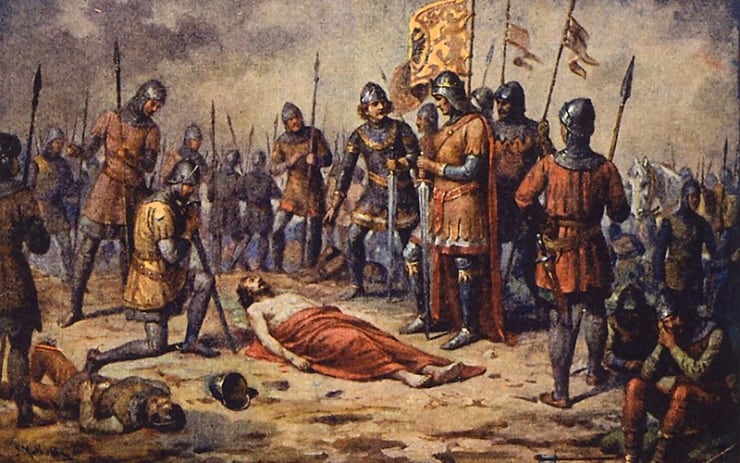Super, děkuji 
26.8. 1278 Battle on the Moravian Field
Categories: Years of war and revolution , Calendar

In the middle of the 13th century, the international political situation in Central Europe changed significantly. The monarchical power in the empire was in the so-called interregnum period, i.e. the years 1250 to 1273. At that time, none of the elected Roman kings (Alfonso X of Castile and Richard of Cornwall) resided in the empire any longer and showed no interest in its administration. In contrast, the Bohemian state was an economically and politically strong entity led by the capable and ambitious ruler Přemysl Otakar II,
After the Battle of Kressensbrun in 1260, Přemysl regained the Austrian lands and Styria from King Béla IV of Hungary. A year later he divorced his wife of many years, Margaret of Babenberg, and married Béla IV's granddaughter, Princess Kunhuta. "In the following years, he added to his dominion the Cheb region, the territory of Carinthia and a part of Krásno. The Bohemian kingdom extended from the Krkonoše Mountains to almost the Adriatic Sea," writes Petr Kovář in his book.
Přemysl also undertook two crusades to Prussia at the request of the Pope and founded the town of Königsberg. The weakening of the Roman Empire forced the king to make two bids for the Roman crown. His election, however, failed in the face of opposition from the pope and German princes who feared the growing power of the already too powerful Bohemian king.
They therefore elected Rudolf of Habsburg, by then quite insignificant, as King of Rome. Přemysl, of course, disagreed and reacted by refusing to accept the Sponhein inheritance in the Austrian lands as a fief. "The Roman monarch launched a military campaign against him in 1276 and isolated him diplomatically. The Bohemian king found himself in a disadvantageous situation in which he was forced to conclude a treaty with Rudolfand to give up most of the acquired territories," Kovář recalls.
However, in an attempt to humiliate his rival, Rudolf instigated another conflict two years later. The decisive clash took place on 26 August 1278 on the Moravian Field in Lower Austria. A total of about 55,000 soldiers took part in the battle and the clash lasted approximately three hours. The muddy Morava River played a role, where the Czech knights drowned. Přemysl Otakar II's army was defeated and the king died in the battle.
The widow Kunhuta temporarily took over the government. However, she was unable to keep order in the country, so the nobility began to plunder the royal property. Although the victorious Rudolf handed over Bohemia to his seven-year-old successor Václav, he did not let him rule in view of his minority. He was sure that he would eventually sit on the throne himself. Kunhuta, however, summoned to the country a favourite of her late husband, Margrave Otto of Brandenburg.
Sources: Petr
Kovář, General Overview of Topics
www.wikipedia.org
Stanislava Jarolímková, What's not in the textbooks
www.bellum.cz
The article is included in categories:
Post
Na den svatého Rufa bylo údajně obrovské vedro. Těžká jízda se nemohla v rozpáleném brnění pohybovat a panstvo se snažilo Otakarovi bitvu rozmluvit. Po prvním nárazu do habsburských šiků vypadal bitva pro české vojsko dobře. Jenže zvířený prach snížil viditelnost a bitva ustrnula na mrtvém bodě. Pak do čechů udeřila druhá habsburská vlna a do našeho tábora vtrhli uherští kumáni. Část českého vojska se obrátila zpět k ležení což dokončilo zkázu. Kumáni bez brnění se ve skupinách vrhali na naše těžkooděné pány a pobíjeli je jednoho po druhém. To už byl mrtev král a nastala panika. Levé křídlo se snažilo najít záchranu v mrtvém rameni řeky a tam se topili v bažině. Kunhuta se uchýlila na opavský hrad a v čechách se ujmuli vlády braniboři.






